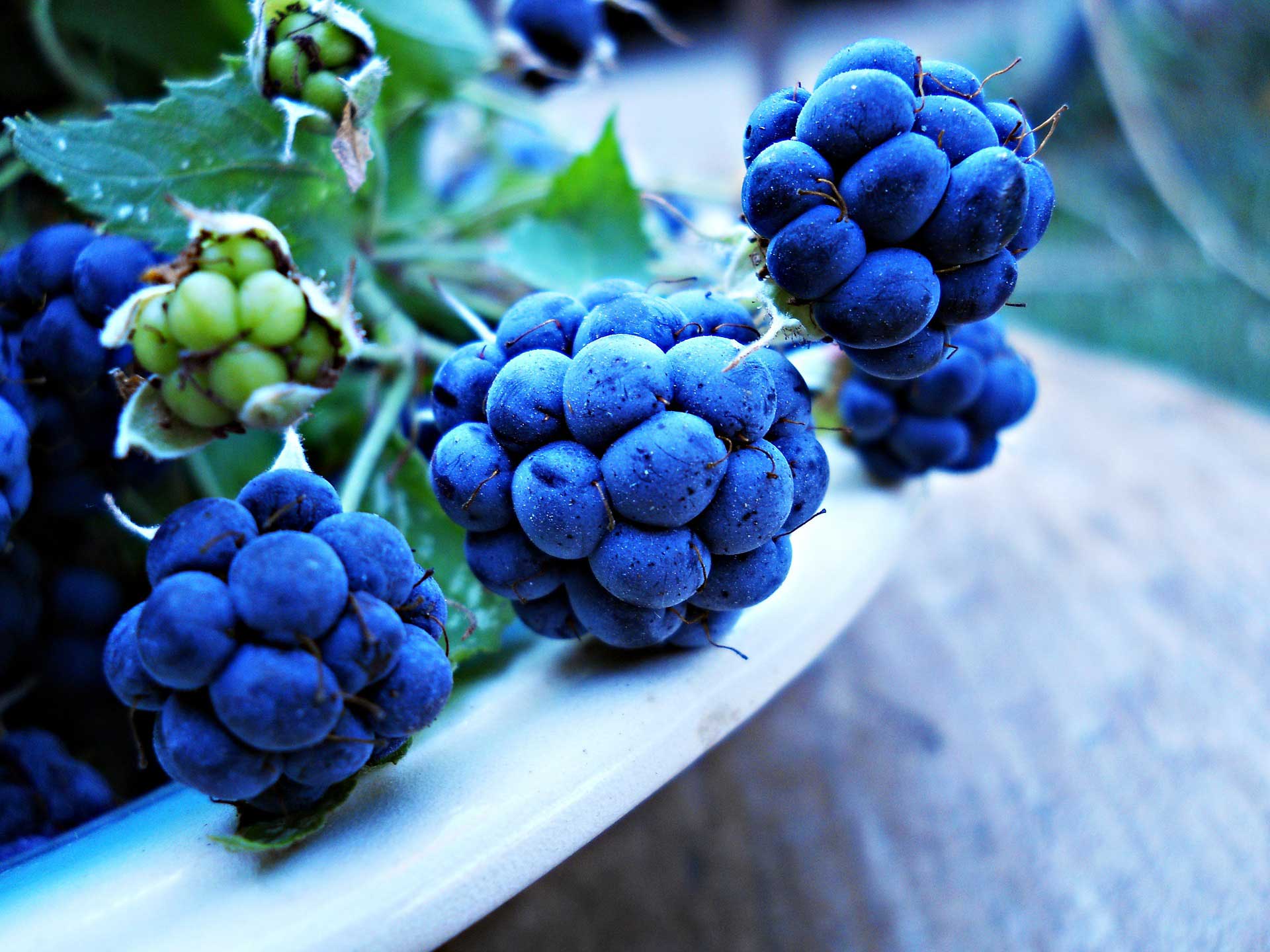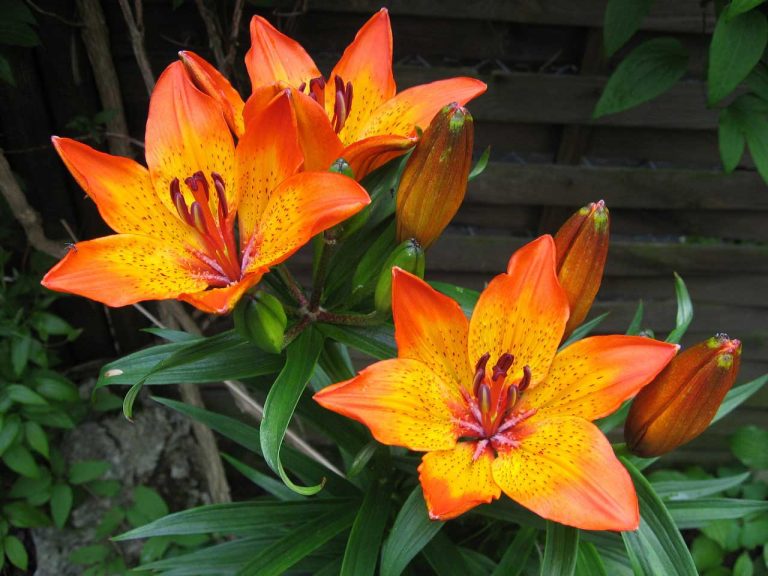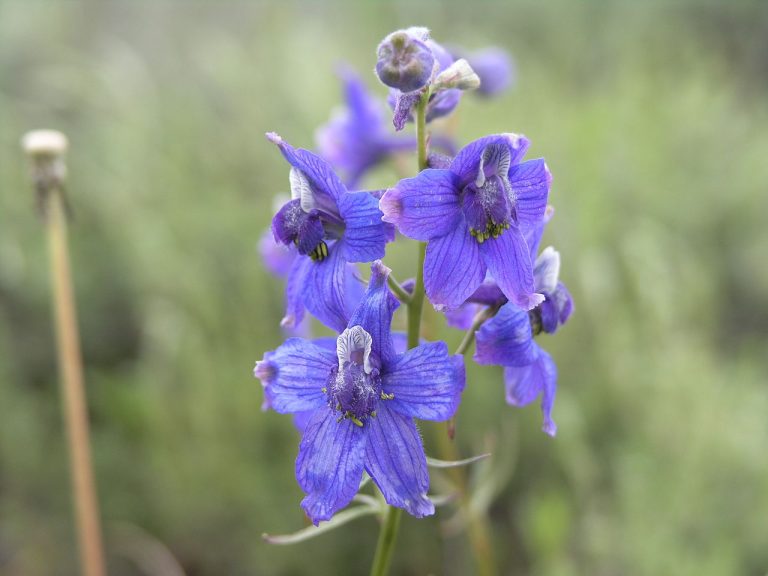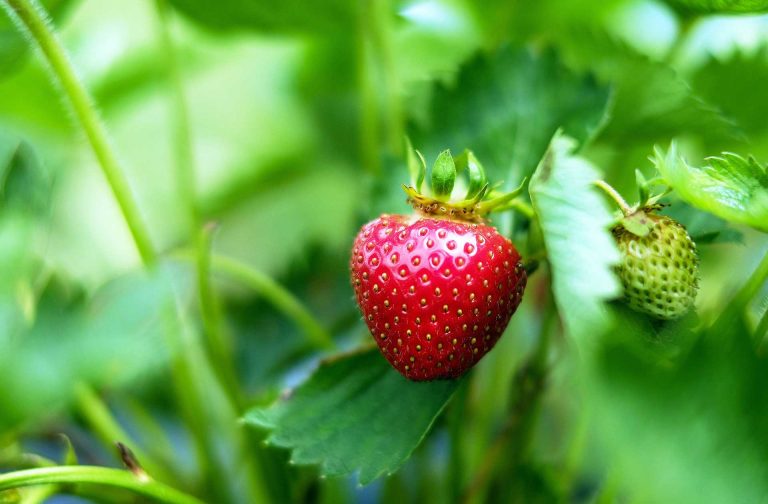Blueberries
Scientific Classification
| Kingdom: | Plantae |
| (unranked): | Angiosperms |
| (unranked): | Eudicots |
| (unranked): | Asterids |
| Order: | Ericales |
| Family: | Ericaceae |
| Genus: | Vaccinium |
| Section: | Cyanococcus |
Blueberries are a perennial type of flowering plants and its berry has an indigo color. They are of the group Cyanocococus that belongs to the variety Vaccinium, a genus that also includes cranberries and bilberries. The blueberry of today is a late development of the 20th century. Prior to the 1900s, if you wanted to relish blueberries, you had to go to the wild and find them.Like all berries, their color pigments offer good antioxidant properties that effectively lower the risk of certain types of cancers.
Anatomy
Blueberries are normally upright shrubs. These prostrate shrubs differ in height from 10 cm (3.9”) to 4 m (13’). In the market, we find two kinds of blueberries; the little ones called ‘low-bush’ berries (like to that in the wild), and the bigger ones they call “high-bush blueberries”. The bell-shaped flowers come in red, pale pink or white and at times they have a greenish tinge. This berry fruit has a diameter 5-16 mm (0.20 – 0.63”). It has at its end a flared crown; the crown is initially faint greenish in color, and gradually turns reddish to purple, and finally when ripe it becomes deep purple. A coating of powdery epicuticular wax, locally called “bloom”, shields the raw berries.
Habitat
These blueberries are habitants of Northern America (until the 1930s no one brought the high-bush berries cultivated for trade, in Europe). Washington, New Jersey, British Columbia, North Carolina, Mary land, Michigan and Western Oregon account for the notable cultivation of the high-bush blueberries.
Soil and Planting

Photo by: Gordana Adamovic-Mladenovic
Blueberries need soil of a different composition when compared to the other garden plants. For blueberries to grow in great quantity they need a properly aerated soil with a great content of humus, moist and most of all highly acidic. A soil test determines the level of acidification. An option is to have a pH value of 4 – 5.5 that you can achieve by adding sulfur. The dosage of sulfur varies depending on the pH value of your soil’s texture; usually it is 7 pounds per 100 sq. Feet. For the complete seasoned root zone, add them into the surface soil to a depth of 6 inches.
Planting
Sow your rabbit eyes fifteen feet from each other, high-bush berries 6 feet from each other and low-bush berries two feet apart. For sustaining acidity and for a regular supply of humus, augment your soil in every hole you plant your berries by adding a full bucket of pine needles or composed leaves. This optimizes the nutrition, moisture content and aeration. Soon after you plant them in the soil deposit 3 inches of biodegradable mulch on the ground. The mulch maintains the roots moist, cool and prevents the growth of weeds.
Watering
The year you plant the blueberries, watering the soil becomes a must to keep the soil moist in all seasons.
Flowering and Maturing
As your blueberries need proper drainage of the soil, make arrangements for the drainage before your planting. Blueberries never prefer rich soil, however, if the yearly growth is less than four inches for low-bush berries and one foot for high-bush berries, add biodegradable manure. This is best for blueberries as they offer nitrogen in a form most suitable to them, as a result of which, the plant’s young roots will stand less chance of burning.
Harvest Month and Storage

Fresh raw blueberries get their complete fragrance and distinctive taste only some days after they become blue. In case you require the sweetest berries among them tickle the bunch of blueberries, then the ripe dead ones will drop into your hands.
Take forty quartz of the surplus blueberries every season, spread them out on freezer pans, after an hour pack them into plastic freezer bags and freeze them. This helps you to enjoy fresh ripe blueberries all year round.
Varieties
Half high blueberries, high-bush blueberries, rabbiteye blueberries and low-bush blueberries.
Recent varieties such as ‘climax’ and ‘Bonita’ cross-pollinate one another successfully and has a delicious Flavor.

Having discovered a fondness for insects while pursuing her degree in Biology, Randi Jones was quite bugged to know that people usually dismissed these little creatures as “creepy-crawlies”.







